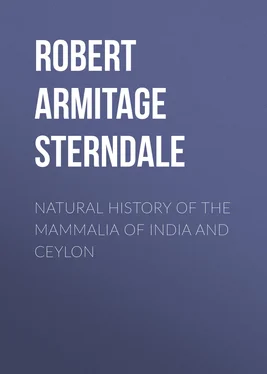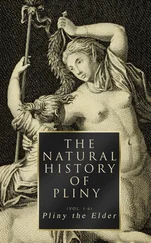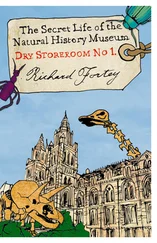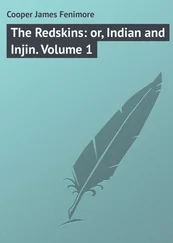Robert Armitage Sterndale - Natural History of the Mammalia of India and Ceylon
Здесь есть возможность читать онлайн «Robert Armitage Sterndale - Natural History of the Mammalia of India and Ceylon» — ознакомительный отрывок электронной книги совершенно бесплатно, а после прочтения отрывка купить полную версию. В некоторых случаях можно слушать аудио, скачать через торрент в формате fb2 и присутствует краткое содержание. Жанр: foreign_edu, Биология, на английском языке. Описание произведения, (предисловие) а так же отзывы посетителей доступны на портале библиотеки ЛибКат.
- Название:Natural History of the Mammalia of India and Ceylon
- Автор:
- Жанр:
- Год:неизвестен
- ISBN:нет данных
- Рейтинг книги:5 / 5. Голосов: 1
-
Избранное:Добавить в избранное
- Отзывы:
-
Ваша оценка:
- 100
- 1
- 2
- 3
- 4
- 5
Natural History of the Mammalia of India and Ceylon: краткое содержание, описание и аннотация
Предлагаем к чтению аннотацию, описание, краткое содержание или предисловие (зависит от того, что написал сам автор книги «Natural History of the Mammalia of India and Ceylon»). Если вы не нашли необходимую информацию о книге — напишите в комментариях, мы постараемся отыскать её.
Natural History of the Mammalia of India and Ceylon — читать онлайн ознакомительный отрывок
Ниже представлен текст книги, разбитый по страницам. Система сохранения места последней прочитанной страницы, позволяет с удобством читать онлайн бесплатно книгу «Natural History of the Mammalia of India and Ceylon», без необходимости каждый раз заново искать на чём Вы остановились. Поставьте закладку, и сможете в любой момент перейти на страницу, на которой закончили чтение.
Интервал:
Закладка:
Jerdon's outward description is: "Above deep ochreous-red; head and tail paler and somewhat fulvous, displayed on the tail in rings; face, chin, and ears within white; ears externally, all the lower surface and the entire limbs and tip of tail jet-black; from the eye to the gape a broad vertical line of ochreous-red blending with the dark lower surface; moustache white; muzzle black."
The one at present in the London "Zoo" is thus described: "Rich red-chestnut in colour on the upper surface, jet black as to the lower surface, the limbs also black, the snout and inside of ears white; the tail bushy, reddish-brown in colour and indistinctly ringed."
SIZE.—Head and body 22 inches; tail 16; height about 9; weight about 8 lbs.
Jerdon has epitomised Hodgson's description of the habits of this animal as follows: "The Wah is a vegetivorous climber, breeding and feeding chiefly on the ground, and having its retreat in holes and clefts of rock. It eats fruits, roots, sprouts of bamboo, acorns, &c.; also, it is said, eggs and young birds; also milk and ghee, which it is said to purloin occasionally from the villages. They feed morning and evening, and sleep much in the day. They are excellent climbers, but on the ground move rather awkwardly and slowly. Their senses all appear somewhat blunt, and they are easily captured. In captivity they are placid and inoffensive, docile and silent, and shortly after being taken may be suffered to go abroad. They prefer rice and milk to all other food, refusing animal food, and they are free from all offensive odour. They drink by lapping with the tongue, spit like cats when angered, and now and then utter a short deep grunt like a young bear. The female brings forth two young in spring. They usually sleep on the side, and rolled into a ball, the head concealed by the bushy tail." (For the full account see 'Jour. As. Soc. Beng.' vol. xvi. p. 1113.)
Mr. Bartlett, who has studied the habits of the specimen in the London Gardens, says that in drinking it sucks up the fluids like a bear instead of licking it up like a dog or cat, which disagrees with what Hodgson states above. "When offended it would rush at Mr. Bartlett, and strike at him with both feet, the body being raised like a bear's, and the claws projecting."
General Hardwicke was the first to discover this animal, which he described in a paper read before the Linnæan Society on the 6th of November 1821, but it was not published for some years, and in the meanwhile M. Duvaucel sent one to M. F. Cuvier, who introduced it first to the world. Some years ago I had a beautiful skin of one offered to me for sale at Darjeeling by some Bhotias, but as it was redolent of musk and other abominations quite foreign to its innocent inodorous self, I declined to give the high price wanted for it.
These form part of the Plantigrada of Cuvier and part of the Digitigrada; they walk on their toes, but at the same time keep the wrist and heel much nearer to the ground than do the true Digitigrades, and sometimes rest on them. Of those Semi-plantigrades with which we now have to deal there are three sections, viz., the Mustelidæ , containing the Gluttons, Martens, Weasels, Ferrets, Grisons, &c., the Melidæ , Melididæ and Melinidæ of various authors: i.e. Badgers, Ratels, and Skunks; and the Lutridæ or Otters. Some writers bring them all under one great family, Mustelidæ , but the above tripartite arrangement is, I think, better for ordinary purposes. To the mind of only moderate scientific attainments, a distinct classification of well-defined groups is always an easier matter than a large family split up into many genera defined by internal anatomical peculiarities.
Of the Semi-plantigrades at large Jerdon remarks: "None of them have more than one true molar above and another below, which, however, vary much in development, and the flesh tooth is most marked in those in which the tuberculate is least developed, and vice versa . The great and small intestines differ little in calibre, and many of them (i.e. the family) can diffuse at will a disgusting stench." This last peculiarity is a specialty of the American members of the family, notably the skunk, of the power of which almost incredible stories are told. I remember reading not long ago an account of a train passing over a skunk, and for a time the majority of the passengers suffered from nausea in consequence. Sir John Richardson writes: "I have known a dead skunk thrown over the stockades of a trading port produce instant nausea in several women in a house with closed doors, upwards of a hundred yards distant." The secretion is intensely inflammatory if squirted in the eye.
This group is distinguished by a heavier form, stouter limbs, coarse hair, and slower action; in most the claws are adapted for burrowing. None of them are arboreal, although in olden times marvellous tales were told of the wolverene or glutton as being in the habit of dropping down from branches of trees on the backs of large animals, clinging on to them and draining their life blood as they fled. Some of them are capable of emitting a noisome smell. The teledu of Java ( Mydaus meliceps ) is the worst of the family in this respect, and almost equals the skunk. It is possible that this animal may be found in Tenasserim.
Dentition much the same as that of the Badger ( Meles ). Incisors, 6/6; can., 1—1/1—1; premolars, 3—3/3—3; molars, 1—1/1—1. The incisors are disposed in a regular curve, vertical in the upper jaw, obliquely inclined in the lower; canines strong, grinders compressed; general form of the badger, but stouter. Feet five-toed, with strong claws adapted for digging, that of the index finger being larger than the other.
NATIVE NAMES.— Balu-suar , Hind., Sand-pig, or, as Jerdon has it, Bhalu-soor , Hind., i.e. Bear-pig; Khway-too-wet-too , Arakanese.
HABITAT.—Nepal, Sikim, Assam, Sylhet, Arakan, extending, as Dr. Anderson has observed, to Western Yunnan. The late General A. C. McMaster found it in Shway Gheen On the Sitang river in Pegu. I heard of it in the forests of Seonee in the Central Provinces, but I never came across one.

DESCRIPTION.—"Hair of the body rough, bristly, and straggling; that of the head shorter, and more closely adpressed. Head, throat, and breast yellowish white; on the upper part this colour forms a broad regularly-defined band from the snout to the occiput; ears of the same colour; the nape of the neck, a narrow band across the breast, the anterior portion of the abdomen, the extremities, a band arising from the middle of the upper lip, gradually wider posteriorly, including the eyes and ears, and another somewhat narrower arising from the lower lip, passing the cheek, uniting with the former on the neck, are deep blackish-brown" ( Horsfield ). The tail is short, attenuated towards the end, and covered with rough hairs.
SIZE.—From snout to root of tail, 25 inches; tail, 7 inches; height at the rump, 12 inches.
M. Duvaucel states that "it passes the greatest part of the day in profound somnolence, but becomes active at the approach of night; its gait is heavy, slow, and painful; it readily supports itself erect on its hind feet, and prefers vegetables to flesh."
Jerdon alludes to all this, and adds, "one kept in captivity preferred fruit, plantains, &c., as food, and refused all kinds of meat. Another would eat meat, fish, and used to burrow and grope under the walls of the bungalow for worms and shells." My idea is Balu-suar , or Sand-pig is the correct name, although Bhalu-suar or Bear-pig may hit off the appearance of the animal better, but its locality has always been pointed out to me by the Gonds in the sandy beds of rivers in the bamboo forests of Seonee; and Horsfield also has it Baloo-soor , Sand-pig.
Читать дальшеИнтервал:
Закладка:
Похожие книги на «Natural History of the Mammalia of India and Ceylon»
Представляем Вашему вниманию похожие книги на «Natural History of the Mammalia of India and Ceylon» списком для выбора. Мы отобрали схожую по названию и смыслу литературу в надежде предоставить читателям больше вариантов отыскать новые, интересные, ещё непрочитанные произведения.
Обсуждение, отзывы о книге «Natural History of the Mammalia of India and Ceylon» и просто собственные мнения читателей. Оставьте ваши комментарии, напишите, что Вы думаете о произведении, его смысле или главных героях. Укажите что конкретно понравилось, а что нет, и почему Вы так считаете.












